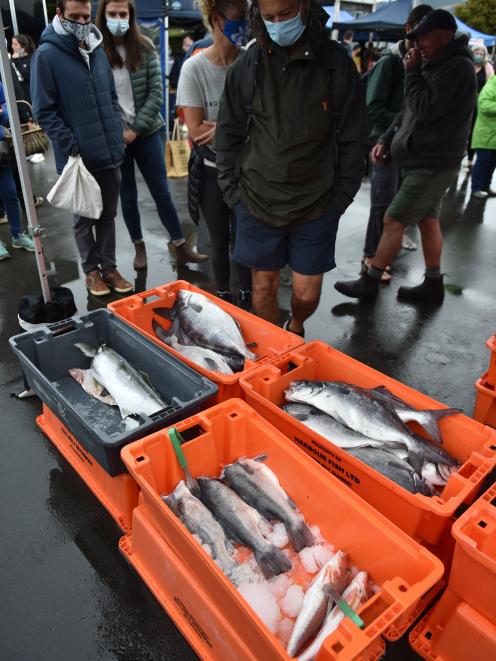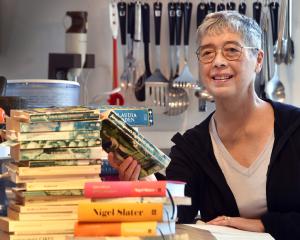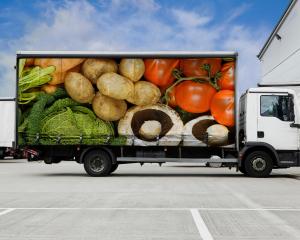
Of course, we know it’s famous out West but it’s also caught in many other places around the coast.
Down south in October we bought whitebait caught at the mouth of the Waiau in Southland. But it’s the West Coast that promotes it as a local specialty.
South of Haast, on a scenic jet-boat ride up the Waiatoto River to the mountains, Ruth Allanson also took us down near the mouth to show us where the whitebait spawn. The season had finished at the end of November and empty stands jutted from the bush along the banks. By mid-December whitebait grew guts and were no longer pleasant eating, she said.
However, we watched the little silver fish swimming in the shallow, shady water where they breed beneath the banks lined with flax and other native plants, and Ruth gave us little whitebait patties to taste.
A few kilometres further south at Jackson Bay’s famous food cart, The Craypot, we had some of the best blue cod and chips I’ve ever eaten. I have to admit the experience was enhanced by the fine weather, the spectacular view from the beachside tables across the bay to the mountains and the bottle of wine we took along.
Jackson Bay, at the southern end of the West Coast highway, is a fishing port known for its crayfish but also blue cod and other fish. Some years ago, asleep in our motorhome parked by the beach, we were woken in the middle of the night by a big truck and trailer loading fish from the cool store. No doubt it would have been delivered to one of the east coast cities early in the morning.
Kaikoura has become synonymous with crayfish. Food trucks selling the delicacy are popular stopping places along the coast road, but of course many other types of fish are landed there and crayfish are caught elsewhere.
Bluff has become famous for its oysters and aficionados claim they have more flavour than the more common farmed Pacific oysters from the North Island. Up north, snapper seems to be the go-to fish, and like trevally and kahawai, they are mainly caught up there but rarely here down in the South.
Marlborough makes a great thing of its farmed green-lipped mussels, although they are also farmed elsewhere in the country.
Salmon is farmed from Stewart Island to Nelson, Marlborough and Canterbury including Akaroa and inland in the Mackenzie country canals.
It brought home to me that although particular types of seafood are promoted in certain parts of the country, fish can also be a regional product.
Down here in Dunedin blue cod used to be our go-to fish but this, moist, flaky fish is now too expensive for everyday eating and has become an occasional treat.
However, there are plenty of other delicious locally caught fish and I often marvel at the bins of large and small fish of many colours and shapes on sale at the Harbour Fish stall at the Otago Farmers Market.
It varies with what has been caught in the previous couple of days, but there’s often orange gurnard with fins like wings, huge hapuku, grey tarakihi, meaty monkfish tails, blue moki, shiny jack mackerel, spiky scarlet wrasse, diamond-shaped flounder or the larger brill with little brown and black shapes on its skin, floppy squid, sometimes pieces of skate wing, red cod, or a thick piece of conger eel and even cod heads, which are a delicacy for some people.
But for those who prefer not to tackle a whole fish, skin, scales, bones and all, there are neatly packaged fillets you can just pop in the pan.
Harbour Fish is a local inshore fishery based in Sawyers Bay, whose boats work from Timaru down to Foveaux Strait. It catches species specific to the South rather than deep-sea fish such as hoki or orange roughy, marketing manager Rachel Cooper says.
"We’re in our summer catching season at the moment, which means we’re regularly seeing species like warehou, moki, elephant and tarakihi from our fishers. In summer we’ll also catch paddle crabs, as well as monkfish and gurnard (which we catch year-round). In winter we catch a lot more blue cod, and flatfish like flounder, lemon sole, New Zealand sole and brill (but we do see these in the summer too, just not as much), and ling."
Fish locations can vary with the season. In winter a lot of its flatfish come from Te Waewae Bay in Southland, whereas in summer they are caught further north, off Kaka Point, she says.













